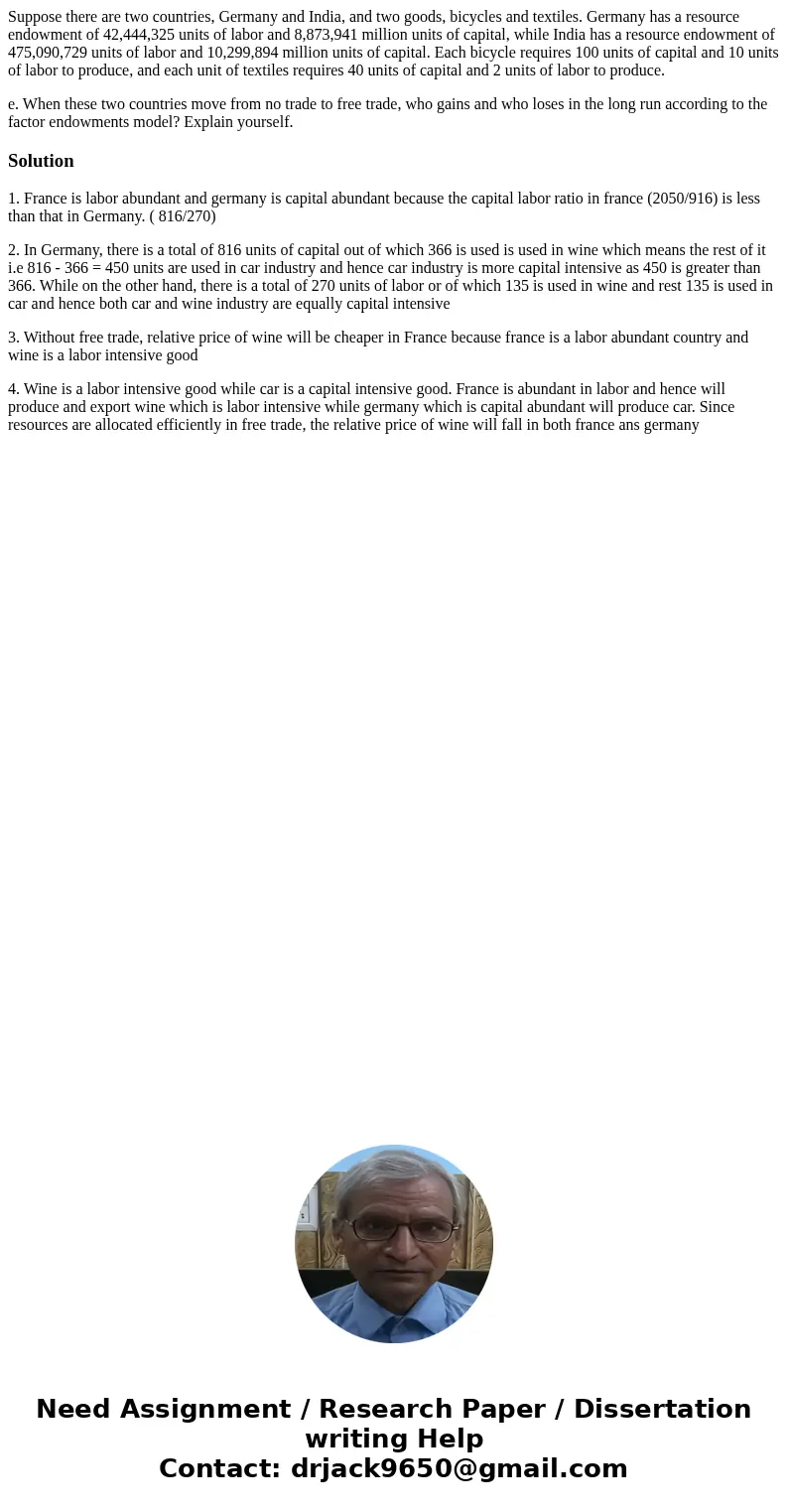Suppose there are two countries Germany and India and two go
Suppose there are two countries, Germany and India, and two goods, bicycles and textiles. Germany has a resource endowment of 42,444,325 units of labor and 8,873,941 million units of capital, while India has a resource endowment of 475,090,729 units of labor and 10,299,894 million units of capital. Each bicycle requires 100 units of capital and 10 units of labor to produce, and each unit of textiles requires 40 units of capital and 2 units of labor to produce.
e. When these two countries move from no trade to free trade, who gains and who loses in the long run according to the factor endowments model? Explain yourself.
Solution
1. France is labor abundant and germany is capital abundant because the capital labor ratio in france (2050/916) is less than that in Germany. ( 816/270)
2. In Germany, there is a total of 816 units of capital out of which 366 is used is used in wine which means the rest of it i.e 816 - 366 = 450 units are used in car industry and hence car industry is more capital intensive as 450 is greater than 366. While on the other hand, there is a total of 270 units of labor or of which 135 is used in wine and rest 135 is used in car and hence both car and wine industry are equally capital intensive
3. Without free trade, relative price of wine will be cheaper in France because france is a labor abundant country and wine is a labor intensive good
4. Wine is a labor intensive good while car is a capital intensive good. France is abundant in labor and hence will produce and export wine which is labor intensive while germany which is capital abundant will produce car. Since resources are allocated efficiently in free trade, the relative price of wine will fall in both france ans germany

 Homework Sourse
Homework Sourse